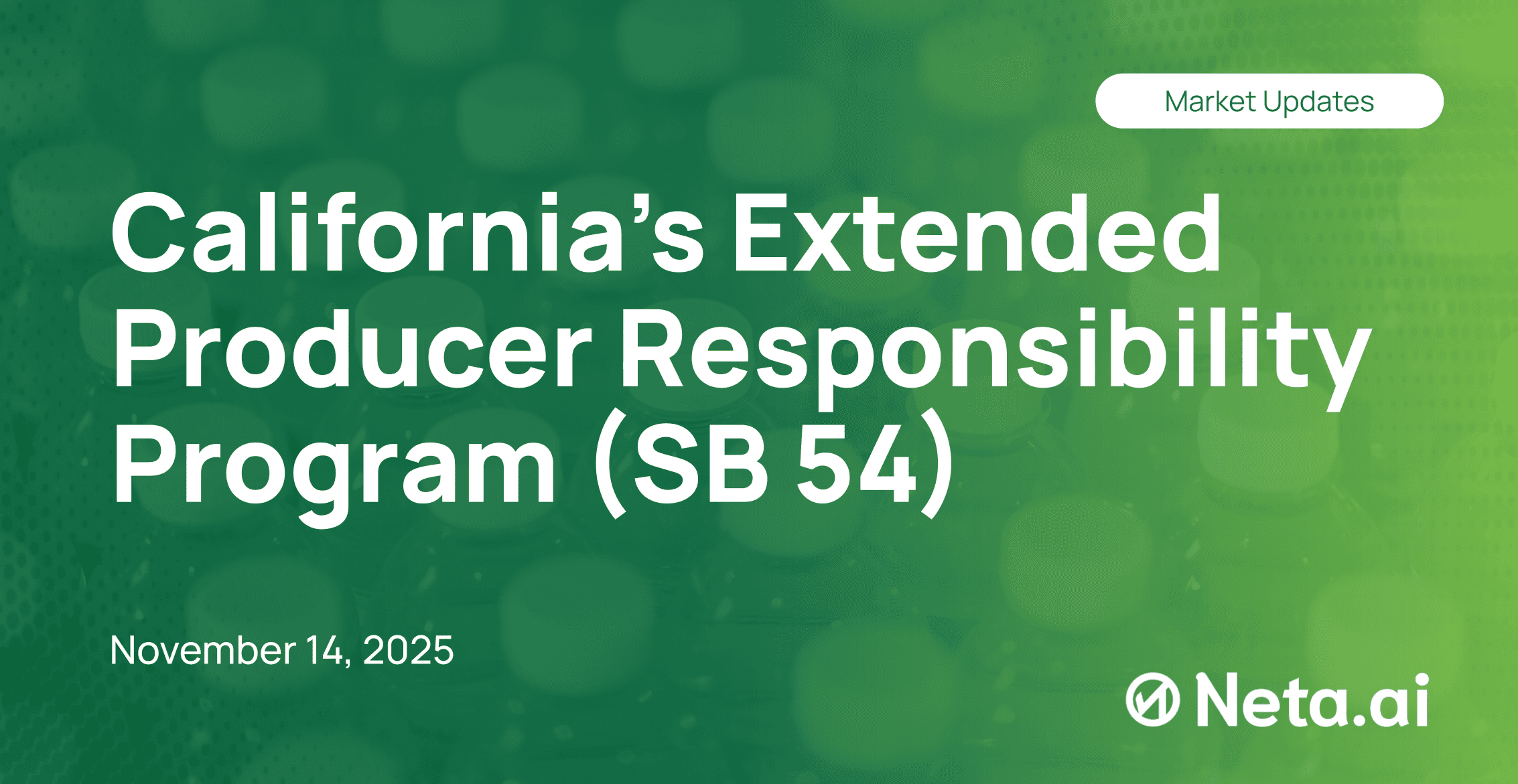All About PFAS, Part 1 – “Forever chemicals” and why they are harmful
All About PFAS, Part 1 – “Forever chemicals” and why they are harmful
All About PFAS, Part 1 – “Forever chemicals” and why they are harmful
IN-DEPTH SERIES
August 12, 2025

Grace Lam
Grace Lam
·
Co-Founder

Samiya Sen
Samiya Sen
·
Blog Contributor



Fast food wrappers. Microwave popcorn bags. Bakery papers. These everyday items share a hidden ingredient: PFAS.
Short for per- and polyfluoroalkyl substances, PFAS are synthetic chemicals that have been widely used in manufacturing for decades. Known as "forever chemicals," they resist heat, water, and oil—and they don’t break down naturally. These properties make them effective in countless products, from nonstick cookware and water-resistant clothing to food packaging and firefighting foam.
But PFAS also pose serious health and environmental risks. Even at low levels, exposure is linked to cancer, hormonal disruption, and immune system issues. As a result, governments around the world are starting to regulate or ban their use.
This three-part series explores what PFAS are, where they show up, and how global and U.S. regulations are evolving in response.
Key Takeaways
PFAS are synthetic “forever chemicals” that don’t break down naturally and build up in the environment and human body.
Exposure, even at low levels, is linked to cancer, hormonal disruption, and immune system issues.
In foodware, PFAS are commonly found in grease-resistant wrappers and fluorinated plastic containers.
Widespread contamination has made PFAS a global health and environmental concern.
Fast food wrappers. Microwave popcorn bags. Bakery papers. These everyday items share a hidden ingredient: PFAS.
Short for per- and polyfluoroalkyl substances, PFAS are synthetic chemicals that have been widely used in manufacturing for decades. Known as "forever chemicals," they resist heat, water, and oil—and they don’t break down naturally. These properties make them effective in countless products, from nonstick cookware and water-resistant clothing to food packaging and firefighting foam.
But PFAS also pose serious health and environmental risks. Even at low levels, exposure is linked to cancer, hormonal disruption, and immune system issues. As a result, governments around the world are starting to regulate or ban their use.
This three-part series explores what PFAS are, where they show up, and how global and U.S. regulations are evolving in response.
Key Takeaways
PFAS are synthetic “forever chemicals” that don’t break down naturally and build up in the environment and human body.
Exposure, even at low levels, is linked to cancer, hormonal disruption, and immune system issues.
In foodware, PFAS are commonly found in grease-resistant wrappers and fluorinated plastic containers.
Widespread contamination has made PFAS a global health and environmental concern.
What Are PFAS?
Per- and polyfluoroalkyl substances (PFAS) are a group of more than 10,000 manmade chemicals designed to repel heat, water, and oil. Their unique structure makes them highly persistent, which means they do not easily degrade in the environment or the human body.
These characteristics made PFAS highly desirable for industrial and consumer applications. You’ll find them in nonstick pans, stain-resistant fabrics, water-repellent gear, firefighting foam, and, most relevant for our readers, food packaging.
PFAS in the Food Industry
PFAS are widely used across foodware to provide grease and moisture resistance. Common examples include takeout containers, fast food wrappers, and bakery or deli papers. They’re also found in some fluorinated plastic containers, such as those made with high-density polyethylene (HDPE), which can come into direct contact with food.
While these coatings help prevent oil and moisture from leaking, they also raise the risk of chemical migration into food. Many regulators around the world have restricted the use of certain PFAS in food packaging due to these concerns. We will go into the details of these regulations in our next few articles in this series.
The Effects of PFAS
The primary concern with PFAS is their persistence: they accumulate over time in soil, water, wildlife, and human bodies. Because PFAS are found in so many everyday items and are difficult to remove, exposure is nearly universal. Even at low levels, PFAS exposure can result in adverse health effects and environmental impacts.
Health Risks
According to the U.S. Environmental Protection Agency (EPA), long-term PFAS exposure is linked to:
Increased risk of some cancers, such as kidney, prostate, and testicular cancer
Hormonal and immune system disruption
Liver damage and thyroid disease
Lowered vaccine effectiveness
Developmental delays in children, including low birth weight and early puberty
Reproductive harm, such as decreased fertility or high blood pressure during pregnancy
Higher cholesterol levels and obesity
Environmental Impact
PFAS contamination has been found in groundwater, rivers, lakes, and even rainwater. A 2023 U.S. Geological Survey study found PFAS in nearly half of all U.S. tap water samples. These chemicals travel easily through air and water, making them hard to contain once released. Wildlife can absorb PFAS through the food chain, threatening entire ecosystems and biodiversity.
Implications for businesses
For businesses in the food, cosmetics, or packaging sectors, PFAS pose more than just a health risk. They represent a growing compliance and reputational liability. PFAS exposure through food packaging can lead to consumer distrust, brand damage, and litigation, especially as regulators increase product testing and disclosure requirements.
Just last week, New Jersey reached a $2 billion agreement with DuPont and its spinoff companies to settle claims they contaminated the state with toxic PFAS and other chemicals from four industrial sites. Earlier this year, 3M announced it would begin making payments this summer to U.S. public drinking water systems on a settlement over PFAS contamination. The agreement called for payments up to $12.5 billion through 2036. These settlements underscore the significant financial and reputational risks businesses face.
Conclusion: From Convenience to Concern
PFAS were designed to make modern life easier, but the cost is only now becoming fully clear. As regulations tighten, companies must understand where PFAS exist in their supply chains and begin transitioning to safer, compliant alternatives. Addressing this issue will require collaboration across governments, industries, and consumers to support the shift toward sustainable packaging and safer material choices.
Stay tuned for Parts 2 and 3 of this series, where we’ll explore the global regulatory landscape around PFAS bans and restrictions.
What Are PFAS?
Per- and polyfluoroalkyl substances (PFAS) are a group of more than 10,000 manmade chemicals designed to repel heat, water, and oil. Their unique structure makes them highly persistent, which means they do not easily degrade in the environment or the human body.
These characteristics made PFAS highly desirable for industrial and consumer applications. You’ll find them in nonstick pans, stain-resistant fabrics, water-repellent gear, firefighting foam, and, most relevant for our readers, food packaging.
PFAS in the Food Industry
PFAS are widely used across foodware to provide grease and moisture resistance. Common examples include takeout containers, fast food wrappers, and bakery or deli papers. They’re also found in some fluorinated plastic containers, such as those made with high-density polyethylene (HDPE), which can come into direct contact with food.
While these coatings help prevent oil and moisture from leaking, they also raise the risk of chemical migration into food. Many regulators around the world have restricted the use of certain PFAS in food packaging due to these concerns. We will go into the details of these regulations in our next few articles in this series.
The Effects of PFAS
The primary concern with PFAS is their persistence: they accumulate over time in soil, water, wildlife, and human bodies. Because PFAS are found in so many everyday items and are difficult to remove, exposure is nearly universal. Even at low levels, PFAS exposure can result in adverse health effects and environmental impacts.
Health Risks
According to the U.S. Environmental Protection Agency (EPA), long-term PFAS exposure is linked to:
Increased risk of some cancers, such as kidney, prostate, and testicular cancer
Hormonal and immune system disruption
Liver damage and thyroid disease
Lowered vaccine effectiveness
Developmental delays in children, including low birth weight and early puberty
Reproductive harm, such as decreased fertility or high blood pressure during pregnancy
Higher cholesterol levels and obesity
Environmental Impact
PFAS contamination has been found in groundwater, rivers, lakes, and even rainwater. A 2023 U.S. Geological Survey study found PFAS in nearly half of all U.S. tap water samples. These chemicals travel easily through air and water, making them hard to contain once released. Wildlife can absorb PFAS through the food chain, threatening entire ecosystems and biodiversity.
Implications for businesses
For businesses in the food, cosmetics, or packaging sectors, PFAS pose more than just a health risk. They represent a growing compliance and reputational liability. PFAS exposure through food packaging can lead to consumer distrust, brand damage, and litigation, especially as regulators increase product testing and disclosure requirements.
Just last week, New Jersey reached a $2 billion agreement with DuPont and its spinoff companies to settle claims they contaminated the state with toxic PFAS and other chemicals from four industrial sites. Earlier this year, 3M announced it would begin making payments this summer to U.S. public drinking water systems on a settlement over PFAS contamination. The agreement called for payments up to $12.5 billion through 2036. These settlements underscore the significant financial and reputational risks businesses face.
Conclusion: From Convenience to Concern
PFAS were designed to make modern life easier, but the cost is only now becoming fully clear. As regulations tighten, companies must understand where PFAS exist in their supply chains and begin transitioning to safer, compliant alternatives. Addressing this issue will require collaboration across governments, industries, and consumers to support the shift toward sustainable packaging and safer material choices.
Stay tuned for Parts 2 and 3 of this series, where we’ll explore the global regulatory landscape around PFAS bans and restrictions.
What Are PFAS?
Per- and polyfluoroalkyl substances (PFAS) are a group of more than 10,000 manmade chemicals designed to repel heat, water, and oil. Their unique structure makes them highly persistent, which means they do not easily degrade in the environment or the human body.
These characteristics made PFAS highly desirable for industrial and consumer applications. You’ll find them in nonstick pans, stain-resistant fabrics, water-repellent gear, firefighting foam, and, most relevant for our readers, food packaging.
PFAS in the Food Industry
PFAS are widely used across foodware to provide grease and moisture resistance. Common examples include takeout containers, fast food wrappers, and bakery or deli papers. They’re also found in some fluorinated plastic containers, such as those made with high-density polyethylene (HDPE), which can come into direct contact with food.
While these coatings help prevent oil and moisture from leaking, they also raise the risk of chemical migration into food. Many regulators around the world have restricted the use of certain PFAS in food packaging due to these concerns. We will go into the details of these regulations in our next few articles in this series.
The Effects of PFAS
The primary concern with PFAS is their persistence: they accumulate over time in soil, water, wildlife, and human bodies. Because PFAS are found in so many everyday items and are difficult to remove, exposure is nearly universal. Even at low levels, PFAS exposure can result in adverse health effects and environmental impacts.
Health Risks
According to the U.S. Environmental Protection Agency (EPA), long-term PFAS exposure is linked to:
Increased risk of some cancers, such as kidney, prostate, and testicular cancer
Hormonal and immune system disruption
Liver damage and thyroid disease
Lowered vaccine effectiveness
Developmental delays in children, including low birth weight and early puberty
Reproductive harm, such as decreased fertility or high blood pressure during pregnancy
Higher cholesterol levels and obesity
Environmental Impact
PFAS contamination has been found in groundwater, rivers, lakes, and even rainwater. A 2023 U.S. Geological Survey study found PFAS in nearly half of all U.S. tap water samples. These chemicals travel easily through air and water, making them hard to contain once released. Wildlife can absorb PFAS through the food chain, threatening entire ecosystems and biodiversity.
Implications for businesses
For businesses in the food, cosmetics, or packaging sectors, PFAS pose more than just a health risk. They represent a growing compliance and reputational liability. PFAS exposure through food packaging can lead to consumer distrust, brand damage, and litigation, especially as regulators increase product testing and disclosure requirements.
Just last week, New Jersey reached a $2 billion agreement with DuPont and its spinoff companies to settle claims they contaminated the state with toxic PFAS and other chemicals from four industrial sites. Earlier this year, 3M announced it would begin making payments this summer to U.S. public drinking water systems on a settlement over PFAS contamination. The agreement called for payments up to $12.5 billion through 2036. These settlements underscore the significant financial and reputational risks businesses face.
Conclusion: From Convenience to Concern
PFAS were designed to make modern life easier, but the cost is only now becoming fully clear. As regulations tighten, companies must understand where PFAS exist in their supply chains and begin transitioning to safer, compliant alternatives. Addressing this issue will require collaboration across governments, industries, and consumers to support the shift toward sustainable packaging and safer material choices.
Stay tuned for Parts 2 and 3 of this series, where we’ll explore the global regulatory landscape around PFAS bans and restrictions.
Since you made it this far, why not sign up for our newsletter?
Since you made it this far, why not sign up for our newsletter?

Make smarter
packaging decisions
See how we can cut your time spent on packaging compliance and data tracking by half

Make smarter
packaging decisions
See how we can cut your time spent on packaging compliance and data tracking by half

Make smarter
packaging decisions
See how we can cut your time spent on packaging compliance and data tracking by half




